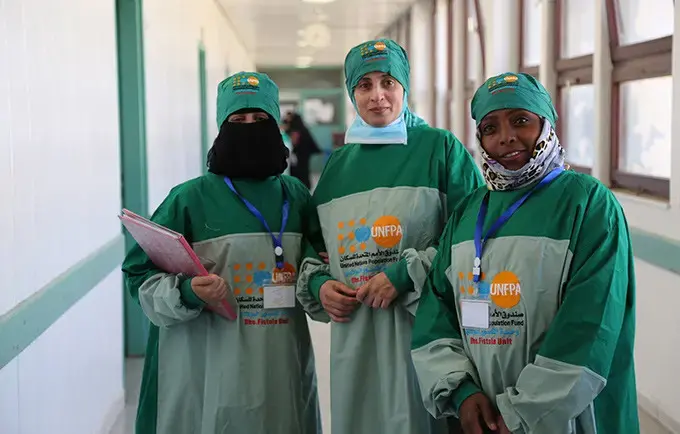Some 5.5 million women of reproductive age, including pregnant and lactating women,
Maternal mortality rates in Yemen remain high
Over 2.7 million pregnant and breastfeeding women are projected to require treatment for acute malnutrition
This is compounded by extreme shortages of essential medicines, supplies and
UNFPA is working to strengthen the health systems to provide emergency obstetric and neonatal care and other lifesaving reproductive health services to reduce maternal mortality and morbidity.
Key Interventions
- Ensure availability of lifesaving reproductive health commodities, medicines, supplies and equipment in health facilities.
- Ensure qualified health personnel are in place to provide reproductive health services in health facilities.
- Support mobile medical teams and clinics to enable them to provide reproductive health services that include; safe deliveries integrated with nutrition services for pregnant women as well as disease prevention information.
- Make family planning and birth spacing methods available and accessible to people through health facilities and mobile clinics.
- Provide skilled healthcare personnel, particularly midwives, at the community level.
- Lead coordination of reproductive health response through the Reproductive Health Inter-Agency Working Group under the Health Cluster



